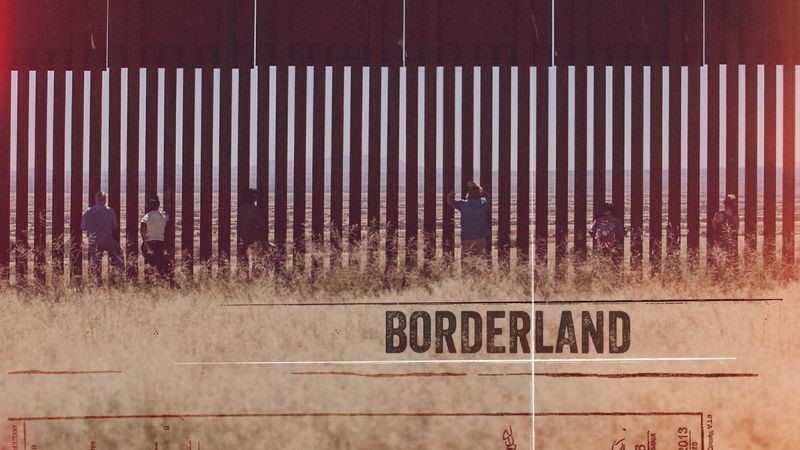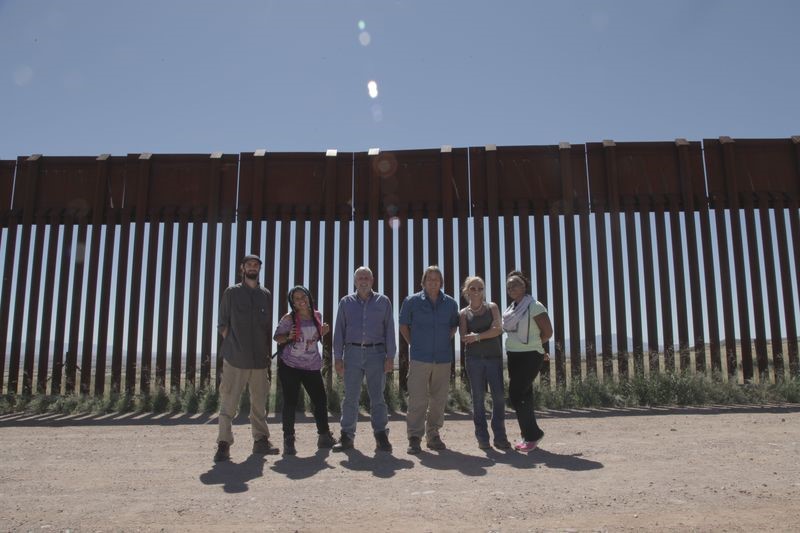By Sylvia Longmire
It’s very rare for a television show to come along that makes me think, This could really change everything. In a political time in our country when we are deeply divided over the best way to achieve immigration reform and how best to secure our borders, it’s more important than ever to more fully understand the underlying cause for mass illegal immigration into the United States. It’s also critical to realize that as we endlessly debate the issue, hundreds, if not thousands, of migrants will continue to die each year—migrants who are real people, and who will continue to risk their lives to come here no matter what we try to do to stop them.

But why do hundreds of thousands of them try to make this deadly journey knowing the dangers that await them? Why would they risk the lives of even their children to come here? And why don’t the governments of Mexico and countries in Central America try harder to prevent this outpouring of their citizens?
As I write this, I’ve been living in Tucson, Arizona for nine months. I’ve been researching and writing about the border for years, but from a distance. I have also visited different parts of Arizona several times, but nothing prepared me for the surreal experience that is actually living so close to our border with Mexico—the drugs, the illegal immigration…and the death. Nowhere else in the country north of the border can you just be driving down the road and reasonably expect to encounter a group of ragged and dehydrated migrants or armed drug smugglers hauling 60-pound bales of dope.
Every year, hundreds of thousands of migrants from Mexico and all points south embark on a deadly journey north to the Promised Land that is the United States. But what used to be simply a test of endurance has now become a struggle for survival. Cartels now control human smuggling operations all along the border, and are increasingly targeting—and killing—innocent migrants, holding them hostage for exorbitant ransom amounts or forcing them at gunpoint to work as drug mules. Can any of us really imagine what the experience of traveling hundreds, if not thousands, of miles through triple-digit heat or sub-freezing cold behind a guide who might abandon you at any moment is truly like?
This is what Al Jazeera America is trying to do with its new series called Borderland. It’s a reality show/documentary that takes six participants and has them follow the path of migrants whose journeys—and lives—ended in the Arizona desert on their way to different parts of the United States. The participants’ views on illegal immigration vary from “there are no borders” to “wall off the border.” There is a street photographer, a farmer, a Republican state Senate aide, a community organizer, a fashion blogger, and a retired Marine; three women and three men, black, white, and Latino, Republican and Democrat. And they’re in for a real shock to their systems.

Before they even start on their journey, their guide takes them to a building with a purpose unknown to them at first. It’s the Pima County morgue in southern Arizona, and they’re faced right away with the bodies of more than 150 dead immigrants. The sight and smell is overwhelming, and immediately you see strong reactions. First comes the sadness, and they all lament the passing of these anonymous corpses. But the reactions soon change to reveal each participant’s view on what put these immigrants in this dismal place. Is US immigration policy to blame for forcing these people onto a deadly path? Or is it the immigrants’ fault for consciously making a choice to break our laws and embark on a trip they knew could be fatal?
The group’s next stop is at the US side of the border, spending time with Cochise County Sheriff Mark Dannels and several border ranchers. They hear the harrowing accounts of drug smugglers running their trucks and ATVs loaded with illegal drugs through private lands, causing tens of thousands of dollars in damage to fences and livestock. Ranchers have been assaulted and burglarized by both armed drug traffickers and desperate migrants looking for food and water. They travel armed, never knowing when they’ll come across border crossers more interested in protecting their drug loads than avoiding an armed confrontation. The participants see where the pedestrian fence ends and a small barbed wire-and-post fence begins, allowing anyone on foot unfettered access to private land on US soil.
I asked Sheriff Dannels, whom I interviewed for my book Border Insecurity, what his impression was of the participants. “The group as a whole seemed to be very surprised that their international border was at such great risk for intrusion and how our border citizens were directly vulnerable to this,” he said. “Additionally, the group got to experience and see the dedicated men and women of the federal government and our local law enforcement officers/deputies who are doing what they can and giving it their best under a federal plan that needs immediate attention. Overall, the trip brought a factual look at our border to those group members that normally get their facts from our media.”
Only after that border visit do the participants learn their real mission: to team up in pairs and follow in the exact footsteps of three immigrants whose lives ended in the Arizona desert. Their mission will take one pair to Mexico, the second to Guatemala, and the third to El Salvador. They’ll meet the families and friends of two women and a 14 year-old boy, and try to discern their life stories. They’ll talk to people in villages who also long to live in the US, and learn of their pain and suffering at the hands of violent street gangs, hunger, and poverty. They’ll try to understand what drives hundreds of thousands of people every year to risk their lives—and sometimes the lives of their children—to leave the hell that is their lifelong home for the hope they’ll make it to their vision of an American heaven.

What follows is one more version of hell for the six participants. In tracking the footsteps of their assigned migrants, they have to ride the fearsome freight train knows as La Bestia, or The Beast, with hundreds of migrants, many of whom will die or be raped before the train stops at its terminus hundreds of miles to the northwest. They’ll travel into the heart of cartel territory in Sinaloa to observe the Mexican army raid a marijuana plantation, then visit the very “cradle of drug trafficking” by way of a stop in the violent city of Culiacán.
Soon afterwards, their real struggle begins in the bustling border crosser staging area of Altar, Mexico. This is where migrants—including the three whose journeys they’re following—stock up on supplies, like backpacks, socks, and water. For women, that includes contraceptives, since roughly eight of ten female migrants will be raped during the trek north. Knowing that so many people have died on this exact route, the participants are scared. The only reason they and the TV crew are even allowed to do this is because a local priest has greased the skids with the Sinaloa cartel, which controls the town. That fact just adds to the jitters over the jarring experience to follow: brutal terrain, a 50-degree temperature drop overnight, dehydration, and emotional and physical exhaustion.

No matter what your views are on illegal immigration, those views are initially represented by one of these six participants. While your views may not completely change after watching Borderland, depending on where those views started, you will be affected. It will humanize immigrants in a way you’ve never seen before, transforming them from just statistics to real people—people who fear the lands they’re leaving more than they fear the dangers that await them. As you’ll see from the stories of Claudeth, Maira, and Omar, the dead in the desert had parents, siblings, and children. They had dreams of a better life, which to them meant just the chance to wash dishes or pick tomatoes for a few dollars an hour, or in Omar’s case, to simply be reunited with his mother.
This series doesn’t provide or even suggest specific answers to the problem of illegal immigration. It doesn’t push a political agenda, and it voices in equal measure the different viewpoints of all the participants without editorializing. What it does do is present the raw reality that is life for millions of people in Mexico and Central America—like the fact that young kids are being recruited by gangs before they even turn ten years old, upon penalty of death or harm to their families. If the US was like this, what lengths would you go to in order to provide a better life for your children—or merely stay alive—in Canada, for example? If staying in the US meant being forced to join a gang, or die in poverty, or watch your children suffer, is there anything that would stop you from crossing our northern border?
 Each of us has a different answer to those questions, and Borderland—a show I think most Americans could benefit from watching—won’t try to put those answers in your head. But it will definitely foster a grand discussion on what needs to change. We can mostly agree that our immigration system is broken. We can’t agree, however, on the best way to fix it. While we argue, people continue to come, and people continue to die, no matter what we try to do to stop them. The need to reunite with family, the need to provide, and the need to survive will always trump any consequences our government—or the Sonoran desert—can impose on illegal immigrants. Always. Borderland makes that very clear, and poses the challenge not just to us, but to every government along this long northbound route: what can we do to keep more people from dying to reach America?
Each of us has a different answer to those questions, and Borderland—a show I think most Americans could benefit from watching—won’t try to put those answers in your head. But it will definitely foster a grand discussion on what needs to change. We can mostly agree that our immigration system is broken. We can’t agree, however, on the best way to fix it. While we argue, people continue to come, and people continue to die, no matter what we try to do to stop them. The need to reunite with family, the need to provide, and the need to survive will always trump any consequences our government—or the Sonoran desert—can impose on illegal immigrants. Always. Borderland makes that very clear, and poses the challenge not just to us, but to every government along this long northbound route: what can we do to keep more people from dying to reach America?
Posted at 03:09 PM in Current Affairs, Government and Politics, Human Smuggling | Permalink